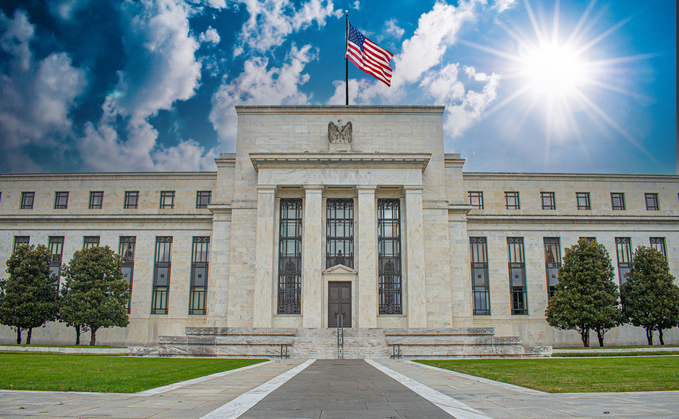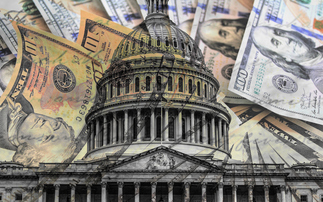
Fixed income markets are entering a new phase, one defined not by crisis or excess, but by divergence, dispersion, and reinvestment opportunity. The narrative around the asset class has been dominated by uncertainty, yet the underlying reality is more constructive. For investors willing to look beyond the noise, the period ahead offers one of the most attractive alpha environments in years.
Policy divergence is reshaping the fixed income map
For years, central banks around the world tended to move in the same direction. Today, that alignment has clearly shifted. The Bank of England remains cautious as it continues to battle stubborn services inflation. The European Central Bank, by contrast, has already begun easing policy in response to cooler economic data. And the Federal Reserve sits somewhere in between, with the trajectory of U.S. inflation and growth increasingly pointing toward additional rate cuts into 2026.
This divergence matters. It has already produced meaningful performance splits—European long maturity bonds, for instance, have outpaced U.S. Treasurys and Gilts at various points this year. We expect that pattern of regional and curve-level differentiation to continue. Ultimately, the next leg of returns is likely to come from falling yields rather than rising income. Our base case assigns a high probability that the U.S. 10-year Treasury yield will fall below 4.1% over the next 12 months. Even in a mild steepening scenario, the broader direction of travel still favours duration.
Volatility is elevated, but the fundamentals don't support a bearish base case
Geopolitical headlines and changing policy expectations continue to keep interest-rate volatility elevated. While these swings can feel unsettling, they also create openings for investors. Importantly, they're not occurring alongside any meaningful deterioration in underlying economic or corporate fundamentals.
In fact, corporate balance sheets remain generally healthy, while global growth is moderating rather than collapsing. Additionally, policy momentum has quietly shifted toward support rather than restraint. The actual risk to monitor is a sharper-than-expected slowdown that would compress risk premia in lower-quality credit. Consumer-linked issuers—autos, home equity, and select cyclical sectors—would be most vulnerable.
But we don't see that as the most likely outcome. The more compelling narrative is that fixed income continues to stand out—offering strong income today, and real potential for price gains if yields move lower tomorrow.
The most compelling opportunities
At Principal Asset Management, our fixed income team uses an FTV framework—fundamentals, technicals, and valuations—to separate durable signals from short-term noise. Through that lens, three opportunity sets stand out.
Selectively add duration where the market has overpriced risk
With policy rates likely heading lower, longer-dated bonds offer an appealing combination of income today and potential price appreciation tomorrow. We're not advocating a sweeping move into long duration, but rather a targeted extension—primarily through U.S. Treasurys and high-quality investment-grade credit. Both areas offer solid carry and the potential to benefit if yields decline as expected.
Favour high-quality high yield, and avoid the lower tail
Within corporate credit, the upper tier of high yield, particularly BB-rated names and select secured structures, stand to benefit from an easing cycle. These issuers tend to have healthier balance sheets, face lower refinancing costs as rates fall, and historically deliver stronger risk-adjusted returns. In contrast, the lower-quality end of the market remains more exposed to late-cycle risks and does not adequately compensate for that uncertainty.
Take advantage of idiosyncratic dislocations
A volatile, uneven market is creating short-lived mispricing that broad-based or passive strategies often miss. We're seeing attractive opportunities in areas such as new-issue investment-grade credit, select securitised assets backed by strong collateral, and certain higher-quality structures that have been temporarily pushed down by technical flows rather than fundamentals. These opportunities tend to be episodic and fast-moving, which is precisely where an active approach can add the most value.
A market that rewards precision
The central story of fixed income today is simple: Fixed income is transitioning from a yield-only asset class to a total-return opportunity once again. The path of policy rates is increasingly asymmetric to the downside, credit fundamentals remain intact, and market dispersion is giving active managers room to differentiate. For investors, the challenge is no longer whether to re-engage fixed income; it is where, how, and with what level of conviction. We believe that a balanced mix of duration, quality, and selective risk-taking offers the most compelling path forward.
Important Information
This material covers general information only and should not be construed as specific investment advice, a recommendation, or be relied on in any way as a guarantee, promise, forecast or prediction of future events regarding an investment or the markets in general. The opinions and predictions expressed are subject to change without prior notice. The information presented has been derived from sources believed to be accurate; however, we do not independently verify or guarantee its accuracy or validity. Any reference to a specific investment or security does not constitute a recommendation to buy, sell, or hold such investment or security, nor an indication that the investment manager or its affiliates has recommended a specific security for any client account.
Investing involves risk, including possible loss of principal. Past performance is no guarantee of future results. Fixed-income investment options are subject to interest rate risk, and their value will decline as interest rates rise. International and global investing involves greater risks such as currency fluctuations, political/social and differing accounting standards. The potential for income and return is accompanied by the possibility of loss. Inflation and other economic cycles and conditions are difficult to predict and there is no guarantee that any inflation mitigation/protection strategy will be successful.
All financial investments involve an element of risk. Therefore, the value of the investment and the income from it will vary and the initial investment amount cannot be guaranteed.
Asset allocation and diversification do not ensure a profit or protect against a loss.














